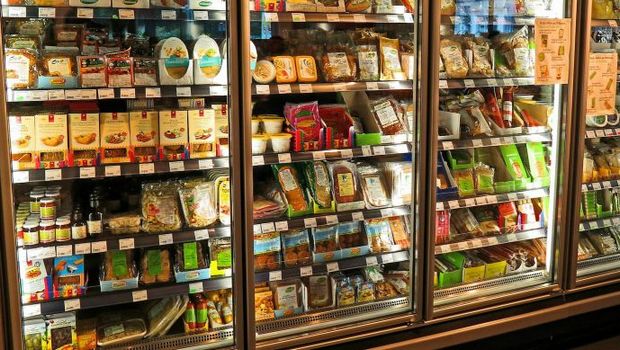New innovations to boost CO2 food retail efficiency

DC inverters to modulate compressor speed are among the refrigeration system innovations that Italian multinational CAREL hopes will boost natural refrigerant uptake in food retail.
DC inverters for BLDC compressors and the EmJ electronic modulating ejector are among the new technologies that Italian multinational CAREL expects to help boost uptake of natural refrigerant-based HVAC&R solutions for food retail applications in 2017.
Natural refrigerants gaining ground in food retail
CAREL expects natural refrigerant-based refrigeration technology to take centre stage at this year’s EuroShop tradeshow – with both CO2 and hydrocarbons winning market share in the food retail sector.
EuroShop 2017, a trendsetting tradeshow for the retail sector to be held in the German city of Düsseldorf on 5-9 March, will bring together over 2,500 exhibitors from over 60 countries.
CAREL predicts that DC inverter technology for CO2 will play an increasingly pivotal role, particularly in condensing unit applications. “We expect this technology to be picked up more widely, following the exceptional response from the market at Chillventa 2016,” Diego Malimpensa, Business Unit Manager – Retail Solutions, CAREL said.
“The combination of energy performance and cost-effectiveness ensured by DC inverter technology are the primary success factors that may open new scenarios, including in other small and medium applications,” he argued.
Improving efficiency with DC inverters
DC inverters increase the efficiency of a refrigeration system by modulating compressor speed (and therefore cooling capacity), helping to reduce energy bills when operating a refrigeration system at part load – for example during the night in a supermarket, when customers are not constantly opening and closing the display case doors.
Continuous modulation is particularly beneficial for commercial refrigeration systems, allowing operators to adjust the load for different conditions.
“In terms of compressor racks, continuous modulation is fully exploited when using the EmJ electronic modulating ejector,” said Malimpensa, explaining: “These maximise the energy efficiency of transcritical CO2 systems in warmer climates, or when heat recovery is used in temperate climates.”
At last year’s Chillventa, CAREL launched the Hecu sistema, its new control solution for CO2 condensing units. “The Hecu solution brings considerable energy savings, by combining the intrinsic efficiency of variable speed DC compressors […] with the use of electronic stepper valves, direct communication with the units, and advanced controllers that maximise performance in all operating conditions,” Malimpensa said.
Matching natural refrigerants to their applications
CAREL’s DC inverter technology can also be applied to water loop systems as part of the Heos solution. The Heos sistema is a new way of developing refrigeration systems comprising plug-in cabinets featuring simple on-board refrigeration units with DC inverter compressors. The heat of condensation is carried outside the store via a water loop, which is cooled by an outdoor dry cooler.
“Obviously, the use of natural refrigerants must go hand-in-hand with energy efficiency and easy installation,” Malimpensa said.
With this in mind, part of CAREL’s R&D effort in 2017 will continue to focus on “matching different natural refrigerants with the intrinsic characteristics of each individual application, and consequently proposing different solutions based on specific needs”.
The Italian multinational has high hopes for this year’s EuroShop. “Natural refrigerants will be one of the main assets at the show, in all applications presented. Not just CO2, but also hydrocarbons,” Malimpensa said.
Hydrocarbons in particular, “are gaining ground in their reference applications – above all in view of ongoing research and the evolution of solutions that are bringing about amendments to international standards, involving an extension of the maximum flammable refrigerant charge in each circuit,“ he said.
